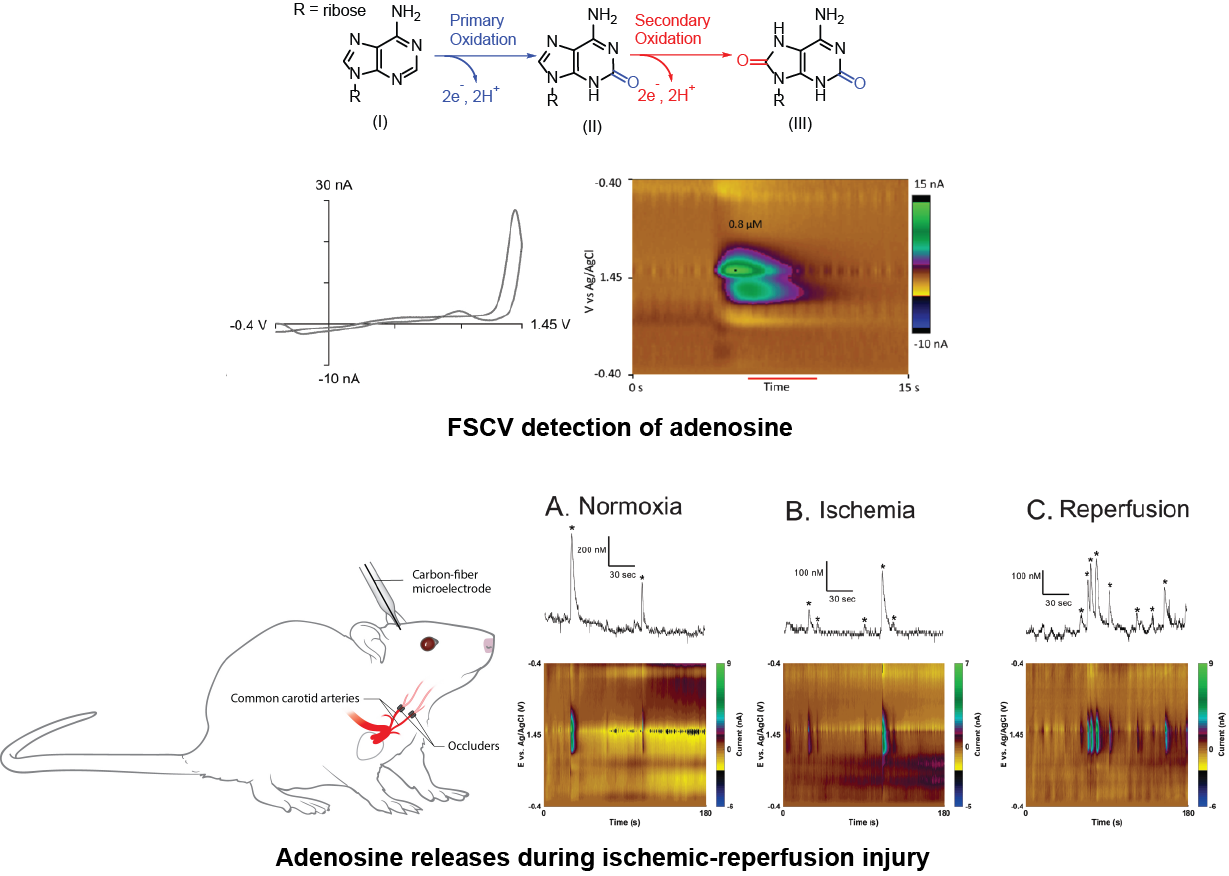Adenosine is known as a slow acting modulator. Venton lab uses FSCV to study dynamics of adenosine on a sub-second time scale in a rat brain. We measure rapid adenosine release in different brain regions in vivo by comparing its release frequency and concentration to study the regional variability. The main questions this project addresses are how is spontaneous adenosine transients formed, how is it regulated, and what are the functions of spontaneous adenosine release. We applied this knowledge to understand adenosine dynamics during the progression of brain ischemia and reperfusion injury. We monitor spontaneous, transient adenosine release during normoxia and ischemia-reperfusion injury. Recently, we started to expand this study of adenosine dynamics to understand whether there are any differences between males and females.

Representative Publications
Wang, Y. ; Venton, B. J. Comparison of spontaneous and mechanically-stimulated adenosine release in mice. Neurochemistry International 2019, 124, 46-50.
Ganesana, M. ; Venton, B. J. Early changes in transient adenosine during cerebral ischemia and reperfusion injury. Plos One 2018.
Wang, Y. ; Venton, B. J. Correlation of transient adenosine release and oxygen changes in the caudate-putamen. Journal of Neurochemistry 2017, 140, 13–23.
Lee, S. T. ; Venton, B. J. Regional variations of spontaneous, transient adenosine release in brain slices. ACS Chemical Neuroscience 2017, 9, 505–513.
